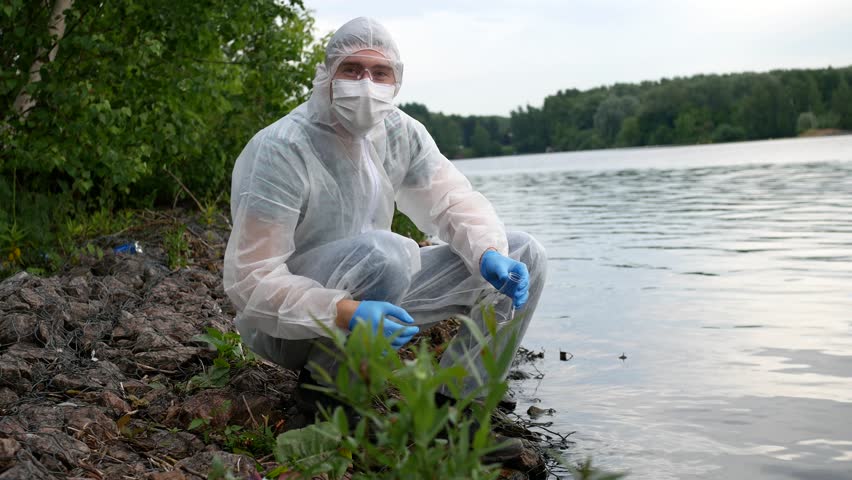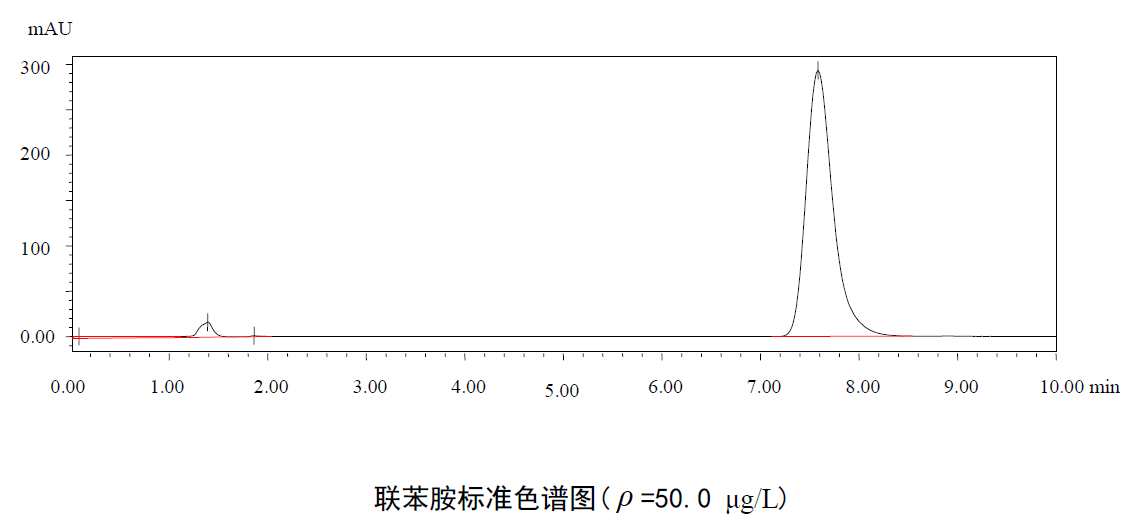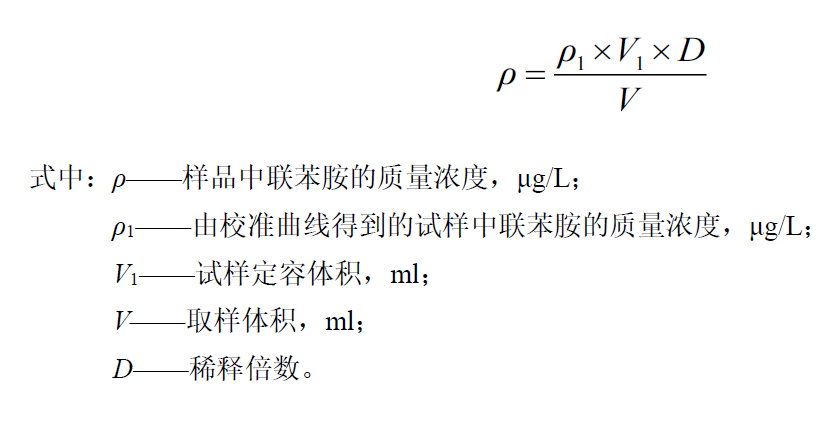Benzidine in surface water, groundwater and sewage is mostly detected by high performance liquid chromatography. The principle is that when the water sample passes through the cation exchange solid phase extraction column, the benzidine will be adsorbed. On the solid phase extraction column, and then eluted with methanol to remove impurities, and then eluted with ammonia water methanol solution, the eluent was concentrated to a certain volume, and then separated and detected by high performance liquid chromatography with a fluorescence detector. Qualitative by retention time, quantified by external standard method.

Reagents and instruments used for testing
Experimental reagents
1. Hydrochloric acid: 1.19g/mlo
2. Glacial acetic acid: 1.05g/ml.
3. Ammonia: 0.91g/ml, excellent grade pure.
4. Sodium hydroxide.
5. Sodium thiosulfate.
6. Ammonium acetate: chromatographically pure.
7. Benzidine: 99.6%.
8. Methanol: liquid chromatography pure.
9. Ethanol.
10. Acetonitrile: liquid chromatography pure.
11. Hydrochloric acid solution: 1+1.
12. Methanol aqueous solution: 1+1.
13. Ammonium acetate solution: 0.01mol/L.
Weigh 0.77g of ammonium acetate, dissolve in water, and dilute to 1L.
14. Acetic acid solution: 3+97.
Measure 3ml of glacial acetic acid and 97ml of water, mix well and set aside.
15. Sodium hydroxide solution: 1mol/L.
Weigh 4 g of sodium hydroxide, dissolve in water, and dilute to 100 ml.
16. Ammonia methanol solution: 5+95.
Measure 5ml of ammonia water and 95ml of methanol, mix well and set aside.
17. Benzidine standard stock solution: 1000ug/ml.
Weigh 0.050g (accurate to 0.1mg) of benzidine in a 50ml brown volumetric flask, dissolve and dilute with methanol to the mark, and transfer to a screw-top brown reagent bottle lined with Teflon pad for storage. This solution can be kept refrigerated below 4°C and protected from light for 1 year. Commercially available certified standard solutions can also be purchased directly.
18. Benzidine standard intermediate solution: 100ug/ml.
Accurately pipette 1.00ml of the standard stock solution of benzidine into a 10ml brown volumetric flask, dilute with methanol to the mark. This solution can be kept refrigerated below 4C and protected from light for 1 year.
19. Benzidine standard solution I: 10.0ug/ml.
Accurately pipette 1.00ml of benzidine standard intermediate solution into a 10ml brown volumetric flask, dilute with methanol aqueous solution to the mark. This solution can be kept refrigerated below 4C and protected from light for 3 months. Before use, bring to room temperature and mix well.
20. Benzidine standard solution II: 1.00ug/ml.
Accurately pipette 1.00ml of benzidine standard solution I into a 10ml brown volumetric flask, dilute with methanol aqueous solution to the mark. Ready to use.
21. Solid phase extraction column: mixed cation exchange solid phase extraction column, the filler is benzenesulfonated polystyrene-divinylbenzene resin, 150mg/6ml, or other equivalent extraction columns.
22. Filter membrane: 0.45pm polytetrafluoroethylene filter membrane.
23. Nitrogen: purity ≥99.99%.
testing equipment
1. High performance liquid chromatograph: with fluorescence detector.
2. Chromatographic column: C18 reversed-phase chromatographic column with filler particle size of 5pm, column length of 15cm, and inner diameter of 4.6mm, or other equivalent chromatographic columns.
3. Sample bottle: 500ml brown glass bottle with ground stopper or brown screw-top glass bottle with Teflon liner.
4. Micro syringe: 10ul, 50ul and 100ul.
5. Nitrogen blower.
6. Ultrasonic cleaning instrument: The output power is above 180W, and the working frequency is 40kHz.
7. Solid phase extraction device.
Test water sample collection
Add sodium thiosulfate to the sample bottle before sampling, adding 40mg per 500ml sample. When sampling, the sample should be filled with the sampling bottle, leaving no head space. If the pH of the sample is not between 6-9, adjust the pH to 6-9 with hydrochloric acid solution or sodium hydroxide solution. The collected samples should be refrigerated below 4°C, protected from light, and extracted within 5 days. The extracted eluate was refrigerated below 4°C and protected from light, and the analysis was completed within 4 days.
Preparation of water samples
1. Activation of the solid phase extraction column
Fix the solid-phase extraction column on the solid-phase extraction device, first pass 5ml of methanol through the solid-phase extraction column at a flow rate of about 2ml/min, add 5ml of water to the column before the packing is exposed to air, and wait for about 2ml of water remaining. , stop the activation.
2. Enrichment, purification and concentration
Measure 150ml of water sample and put it in a 250ml conical flask, pass through the activated solid phase extraction column at a flow rate of about 2ml/min. After the water sample is completely enriched, add 5ml of acetic acid solution, and after the acetic acid solution has completely flowed out, add 8ml of acetic acid solution. Rinse with methanol, and continue to pump with a vacuum pump for 5 min after the methanol has completely flowed out. Elute with 7 ml of methanolic ammonia solution, and collect the eluate in a concentrated bottle. Then, place the concentration bottle on a nitrogen blower, concentrate to 1ml at 60°C, and then dilute to 2.0ml with water. After mixing, filter it through a filter into a brown water sample bottle for testing.
3. Preparation of blank samples
Replace the water sample with experimental water, and prepare the blank sample according to the same steps as the sample preparation.
Specific detection steps
1. Chromatographic reference conditions
Mobile phase A: acetonitrile, mobile phase B: ammonium acetate solution; the elution program is isocratic elution, mobile phase A/mobile phase B=20/80 (V/V), flow rate: 1.0ml/min; column temperature: 40°C; excitation wavelength: 292nm, detection wavelength: 395nm; injection volume: 40.0ul.
2. Establish a calibration curve
Take an appropriate amount of benzidine standard use solution I or benzidine standard use solution II, and dilute with methanol aqueous solution to prepare a standard series with at least 5 concentration points. The mass concentrations of benzidine are 2.00ug/L, 5.00ug/L, 10.0ug/L, 50.0ug/L, 100ug/L, 200ug/L (this is the reference concentration). According to the chromatographic reference conditions, the standard series of solutions were injected sequentially from low concentration to high concentration, and the mass concentration of benzidine (ug/L) was used as the abscissa, and the corresponding chromatographic peak area or peak height was used as the ordinate to establish a calibration curve.
3. Determination of water samples
The tested water samples and blank samples can be measured under the same conditions as the establishment of the calibration curve.

The final qualitative analysis can also be based on the retention time of the benzidine compound in the water sample and the target compound in the standard series. The fluorescence intensity ratio at different wavelengths can be used to assist the qualitative analysis. If necessary, high performance liquid chromatography-triple quadrupole mass spectrometry can be used. Undergo verification. The quantitative analysis can be calculated according to the relevant formula.

The above content comes from 《HJ 1017-2019 Water Quality Determination of Benzidine High Performance Liquid Chromatography》



